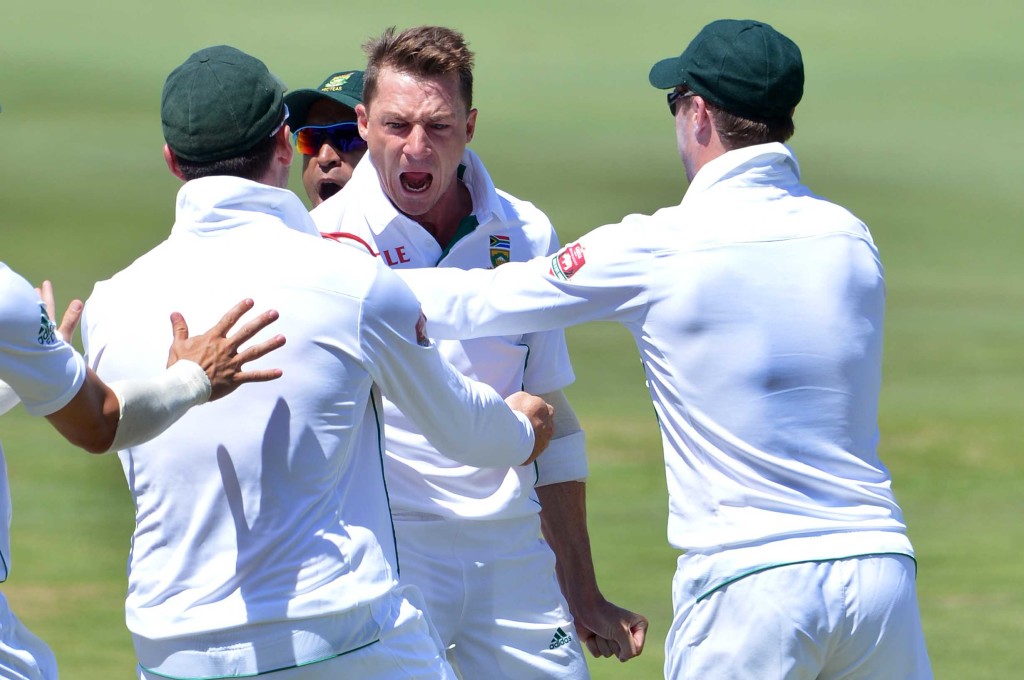After the frenetic fun and fireworks of the ODIs in New Zealand and Australia, the Proteas turn their attention to Test cricket, writes MARK SALTER.
It has been a while since the last home Test series, against Australia, at the turn of the year, with just one outing in Zimbabwe and two in Sri Lanka in between.
But West Indies breeze into town in December, scheduled to play three Tests, kicking off in Centurion on 17 December, followed by Port Elizabeth (26-30 December) and Cape Town (2-6 January).
There are also three T20Is and five ODIs, but it is the Tests which capture the imagination as the new era of Protea power sets about enhancing the legacy built on the iron will of Graeme Smith. It is only in Test matches that names are cemented into folklore; the rest is just fun and games, and for all their expertise in the short formats, most true cricketers want to make their name in Tests.
Until the Australia-Pakistan series, the Proteas were the No 1 Test side in the world, but they are in a rebuilding phase under the leadership of Hashim Amla, after the retirements of such legends as Mark Boucher, Jacques Kallis and Smith. It is Amla’s authority which will be under scrutiny, for he certainly has the performance credentials, having scored almost 6 500 runs at an average of over 51 in 79 Tests.
Amla holds the record for the highest South African score of 311 (not out), registered against England in the first Test in 2012 – a score which put the Proteas well on the road to taking the No 1 spot.
No one who saw that innings will ever forget it. Amla joined Smith at the crease with one wicket down, chasing England’s formidable first innings of 385. The two put on 259 for the second wicket in a wonderful display of determination and class: Smith belligerent and pugilistic, hunched forward with his jaw set, challenging the bowlers; Amla standing perfectly still with a mild, almost quizzical, look on his face as he whipped the ball to the boundary with a flick of his wrist.
Smith contributed 131, and it is almost a footnote that Jacques Kallis scored 182, forgoing the chance of a double hundred by urging a declaration at tea on the fourth day with the total on 637. Amla had batted for 13 hours in a relentless sun, and all the while on a Ramadan fast.
That is the stuff of legends, and the example the new generation have to follow.
Already, they are showing great promise. Faf du Plessis, the new kid on the block on that 2012 tour, is now well established.
He too made his name in a heroic stand which put the Proteas in a position to claim a 1-0 win in a three-Test series against Australia after their England trip. There, in the second Test in Adelaide, he resisted all that Australia could throw at him for almost eight hours, scoring 110 in a nail-biting rearguard action which not only saved the Test, but proved that excitement need not be all about big-bang sixes and shattered stumps.
Now is the time for the new generation to seize their opportunity; and none more so than young Quinton de Kock, who burst on to the scene in ODIs with wide-eyed innocence and a sublime talent. This he showed to the full with three consecutive one-day centuries against India in 2013, and joined such luminaries as Kevin Pietersen, Sir Viv Richards and Jonathan Trott as one of four batsmen to reach 1 000 ODI runs in just 21 innings. But it is a place in the Test team that needs to be cemented.
He also epitomises the difference between one-day cricket and the true art. It is now a given that De Kock will open the batting in ODIs, where his impetuous nature is given free rein, but he is pencilled in lower down the order for the Tests. He opens for his franchise, the Highveld Lions, but needs a sounder foundation in Tests. He may yet move up the order into the frontline, which is still an area of concern, but for the moment, especially if he is to keep wicket, his position is more likely to be at No 6, where he has played in six of his seven innings to date, with a high of 81 against Zimbabwe.
There are others desperate to show their talent on the biggest stage of the game: Cobras batsman and one of South Africa’s five Players of the Year, Stiaan van Zyl, being a frontrunner, and Dane Piedt, who set out his ambitions after making his Test debut in Zimbabwe: ‘I want to play 50 Test matches, and take 200 wickets at an average of 29-30. That’s basically what I want to do.’
And now is the time for all to showcase their skills for they face a side in some disarray. The West Indians are but a shadow of the great sides of the 1970s and ’80s, when their irresistible pace attack was supplemented by the immense batting skills of such monuments to the game as Garry Sobers, Viv Richards, Clive Lloyd, Gordon Greenidge, Desmond Haynes and Brian Lara, the last of the ‘great’ West Indies players.
They beat South Africa in their inaugural Test match after readmission, in 1992, in Bridgetown, but since then there has been a tragic decline in West Indies fortunes. In six Test series, South Africa have won the Sir Vivian Richards Trophy each time. In fact, since 2000, when they beat Pakistan, West Indies have won only 13 series out of 48; and eight of those wins came against minnows Bangladesh and Zimbabwe, both rated below the West Indies in the ICC rankings. Calypso cricket is now more Collapso cricket, the team torn by political strife and declining interest.
It is not so much about the quality of the opposition South Africa face, but the need to do the job presented to them and to do it well. For that is the stuff of legends.
This article is courtesy of TFG’s SportsClub Monthly December issue.
Photo: Backpagepix





